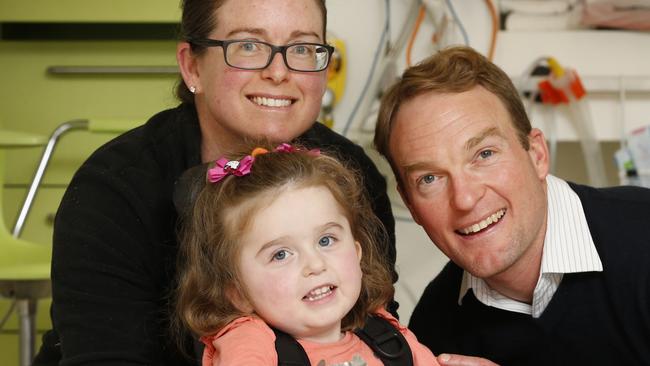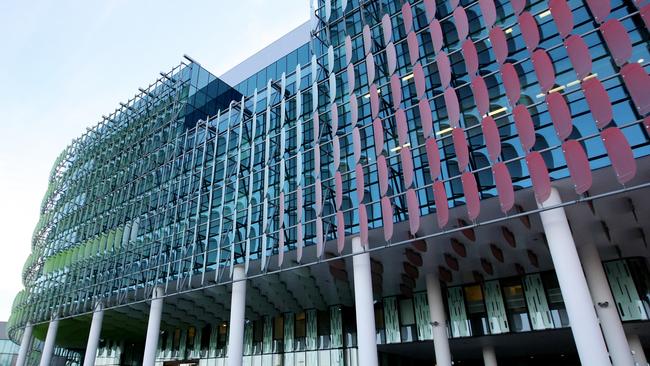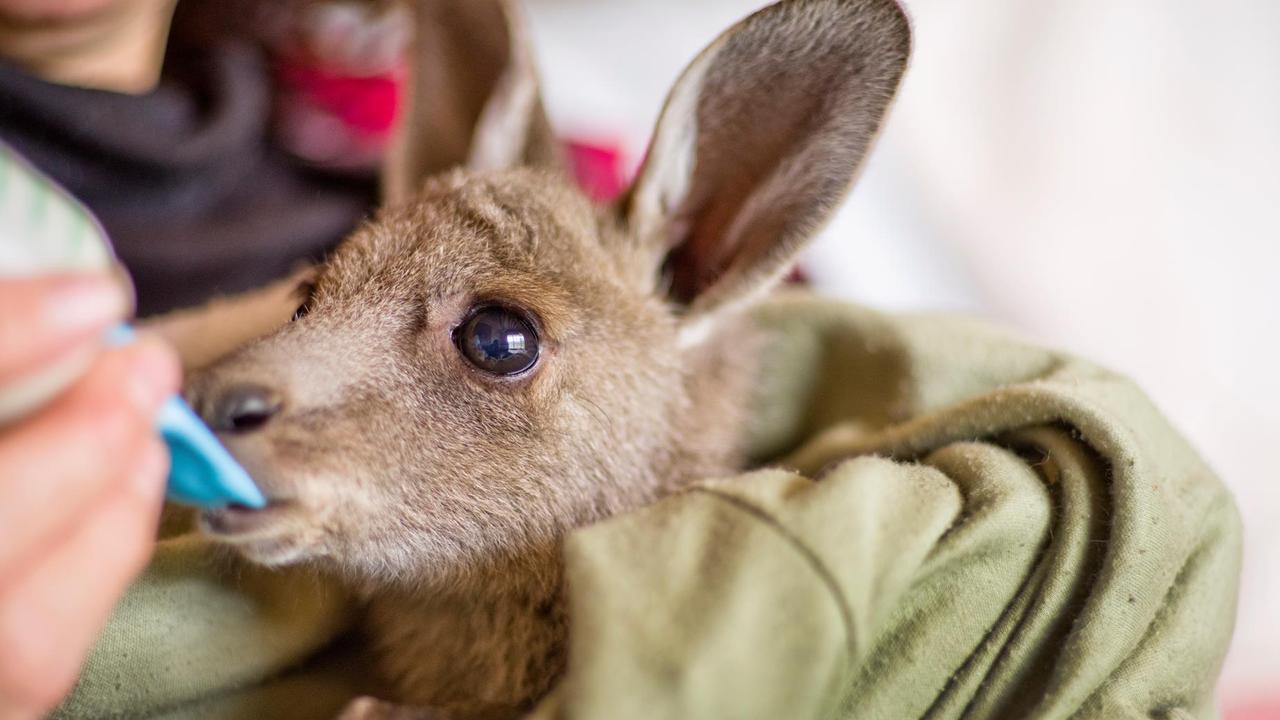Shot of hope for Stephanie Nave as children get muscle-waste treatment under PBS
A MONTH ago, Stephanie Nave’s chance of an independent life cost $1 million. This week, after the federal government subsidised a breakthrough drug, she received the $6.40 treatment.
VIC News
Don't miss out on the headlines from VIC News. Followed categories will be added to My News.
IT is the breakthrough $1 million drug that when given to affected babies before symptoms appear, they are able to run and play just like other young children their age.
And now children with less severe types of Spinal Muscular Atrophy — most who are still wheelchair bound — also have a shot at an independent life after the Federal Government subsidised access to the drug Spinraza (nusinersen).
Stephanie Nave, 4, was on Tuesday the first child with the muscle wasting disease to be treated under the compassionate access at the Royal Children’s Hospital.
DRUG THAT HELPS SPINAL MUSCULAR ATROPHY PUT PBS
$5000 A MONTH BREAST CANCER DRUGS RECOMMENDED FOR SUBSIDY
MULTIPLE MYELOMA DRUG CARFILZOMIB ADDED TO PBS
Amanda Hulands-Nave and Mark Nave could have put their efforts over the past couple of years into fundraising to get Stephanie the drug. But instead they have poured their energies into publicly campaigning for equitable access for children with all types of SMA through a listing by the Pharmaceutical Benefits Scheme.
The RCH plans to treat 30 children with the spinal infusion this year, with the aim of halting progression or even reversing muscle loss to improve motor function.

Young people under 18 with types 1, 2, and 3a will pay just $6.40 a treatment, through the $240 million federal budget package.
Previously, the first year of treatment was $1 million, followed by $360,000 annually.
“I feel humbled to have been an integral part of something that’s going to make a difference to the lives of so many people, and to the many people who don’t know they’re going to be affected in the future,” Dr Hulands-Nave said.
Their hope for Stephanie, who has SMA type 2, is that the drug may enable her to walk with a frame, or at least allow her to build the strength needed to help herself from a wheelchair.
RCH Director of Neurology, Professor Monique Ryan said Spinraza had been given to infants with the most severe type 1 over the past couple of years through a clinical trial and compassionate access scheme, before the infants showed any sign of the disease.

Many of these children, who are now aged around two years, are still symptom-free.
“We look at some of them and think; if they’d been born four or five years ago, they probably would have died by now,” Prof Ryan said.
“It’s unbelievable. We have every reason to believe this drug will also help these other children to quite a significant degree.”
Dr Hulands-Naves said the SMA community would continue to lobby government so adults could access the drug cheaply, and for SMA to be included on the newborn heel prick test.
“If all newborns can be screened in the first few days of life, this will be a disease of history,” she said.


